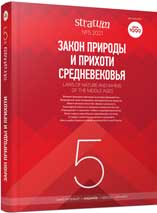«Персидские» и «римские» собаки в средневековом Китае
“Persian” and “Roman” Dogs in Medieval China
Author(s): Maria Andreevna KudinovaSubject(s): History, Cultural history, Middle Ages, 6th to 12th Centuries
Published by: Издательский дом Stratum, Университет «Высшая антропологическая школа»
Keywords: China; Central Asia; Northern dynasties; Tang dynasty; Silk Road;dogs;
Summary/Abstract: Historical and literary works and archaeological materials (such as pottery figurines, tomb murals and reliefs, paintings etc.) recorded the spread of foreign dog breeds in the territory of China since the period of the Northern dynasties and their highest popularity among Chinese upper class during Tang epoch. At the present time there is information about two breeds — “Persian” dogs and “Roman” dogs.“Persian” dogs (Bosi gou, Bosi quan) were the hunting dogs with a thin elongated body, long legs, short-haired, probably, related to Saluki. “Roman” dogs (Fulin gou, Fulin quan) were miniature dogs with short body and legs, long-haired, black and white spotted, probably, originated from Maltese dogs. They performed a decorative function and served as companions of women and children. Apparently, originally both “Persian” and “Roman” dogs were imported into China along the Silk Road via Sogdian city-states of Central Asia and the states of Western Regions (Xiyu). Later, the breeding of these dogs started in China in order to meet the demand for the prestigious home pets among the Chinese elite.
Journal: Stratum plus. Археология и культурная антропология
- Issue Year: 2021
- Issue No: 5
- Page Range: 187-194
- Page Count: 8
- Language: Russian
- Content File-PDF

